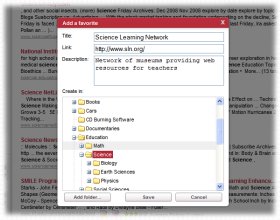|
Education
Web
Viewing 1-8 of 8 total results
Response to Intervention For the millions of children who struggle with learning, The Individuals with Disabilities Education Act (IDEA ) holds great promise for providing them with the early recognition and evidence-based instruction they need to succeed in school. The new law allow...
1
0
Response to Intervention For the millions of children who struggle with learning, The Individuals with Disabilities Education Act (IDEA ) holds great promise for providing them with the early recognition and evidence-based instruction they need to succeed in school. The new law allows schools to use a research-based, multi-tiered problem-solving approach known as Response to Intervention (RTI) as a vehicle to helping all students who struggle with learning. It holds particular promise for
38
0
http://centeroninstruction.org/files/rti_role_definitions.pdf#page=38
centeroninstruction.org/files/rti_role_definitions.pdf#page=38
Response to Intervention For the millions <span class="highlight">of</span> children who struggle with learning, The Individuals with Disabilities Education Act (IDEA ) holds great promise for providing them with the early <span class="highlight">recognition</span> and evidence-based instruction they need to succeed in school. The new law allows schools to use a research-based, multi-tiered problem-solving approach known as Response to Intervention (RTI) as a vehicle to helping all students who struggle with learning. It holds particular promise for
Eliza Law Custis Lap Desk, ca. 1795 Appraisal Video
plaque here. The plaque says, "Presented by Marquis de Lafayette to Eliza Parke Custis, who gives it to her beloved daughter Eliza Law." Now, who is the Marquis de Lafayette? We all probably know. GUEST: Mm-hmm. APPRAISER: Who is Eliza Parke Custis? The Marquis de Lafayette was...
Stanford Encyclopedia of Philosophy: and language
language to deal with other problems they face. Philosophy of law shares a tension that affects philosophy of mind and metaphysics, and perhaps all the central areas of philosophy: it is often unclear which problems are problems of language, and which are no...
Stanford Encyclopedia of Philosophy: scientific explanation
described below. Many philosophers think of concepts like “explanation”, “law”, “cause”, and “support for counterfactuals” as part of an interrelated family or circle of concepts that are “modal” in character . For fami...
Tribal Court Clearinghouse
collaboration & promising practices Subject areas include: courts, law enforcement, detention, child welfare, and multi-agency agreements Features of the website include: Tribal-State agreements by topic Tribal-Federal Collaborations Promising Practices stories and quotes Resour...
Stanford Encyclopedia of Philosophy: economic analysis of law
behavior and a doctrinal interpretation that the prevailing legal rule is identified by its efficiency. The literature, however, has offered scant explanation or justification for the underlying theoretical claim that efficiency identifies the content of these legal norms. On what theory ...
probabilities. For example: If one girl and one boy are picked at random from a class with 20 girls and 15 boys, there are 20 × 15 = 300 different possibilities, so the probability that a particular girl is chosen together with a particular boy is 1300 . 9.4.3.2 Calculate experi...
1
0
probabilities. For example: If one girl and one boy are picked at random from a class with 20 girls and 15 boys, there are 20 × 15 = 300 different possibilities, so the probability that a particular girl is chosen together with a particular boy is 1300 . 9.4.3.2 Calculate experimental probabilities by performing simulations or experiments involving a probability model and using relative frequencies of outcomes. 9.4.3.3 Understand that the Law of Large Numbers expresses a relationship between the
44
0
http://education.state.mn.us/mdeprod/groups/Standards/documents/LawStatute/035171.pdf#page=44
education.state.mn.us/mdeprod/groups/Standards/documents/LawStatute/03517...
probabilities. For example: If <span class="highlight">one</span> girl and <span class="highlight">one</span> boy are picked at random from a class with 20 girls and 15 boys, there are 20 × 15 = 300 different possibilities, so the probability that a particular girl is chosen together with a particular boy is 1300 . 9.4.3.2 Calculate experimental probabilities by performing simulations or experiments involving a probability <span class="highlight">model</span> and <span class="highlight">using</span> relative frequencies <span class="highlight">of</span> outcomes. 9.4.3.3 Understand that the Law <span class="highlight">of</span> Large Numbers expresses a relationship between the
the first row. The teacher then drew a red marble and gave it to a student in the second row. What was the theoretical probability of the simulation? Model this probability using two different representations. (see representations in MHS-S2C2-01) PO 4. Explain and use the law ...
1
0
the first row. The teacher then drew a red marble and gave it to a student in the second row. What was the theoretical probability of the simulation? Model this probability using two different representations. (see representations in MHS-S2C2-01) PO 4. Explain and use the law of large numbers (that experimental results tend to approach theoretical probabilities after a large number of trials). MHS-S5C2-05. Summarize and communicate mathematical ideas using formal and informal reasoning. The
12
0
http://www.ade.state.az.us/standards/math/Articulated08/Gradeleveldocs/MathGradeHS.pdf#page=12
www.ade.state.az.us/standards/math/Articulated08/Gradeleveldocs/MathGrade...
the first row. The teacher then drew a red marble and gave it to a student in the second row. What was the theoretical probability <span class="highlight">of</span> the simulation? <span class="highlight">Model</span> this probability <span class="highlight">using</span> two different representations. (see representations in MHS-S2C2-01) PO 4. Explain and use the law <span class="highlight">of</span> large numbers (that experimental results tend to approach theoretical probabilities after a large number <span class="highlight">of</span> trials). MHS-S5C2-05. Summarize and communicate mathematical ideas <span class="highlight">using</span> formal and informal reasoning. The
|
